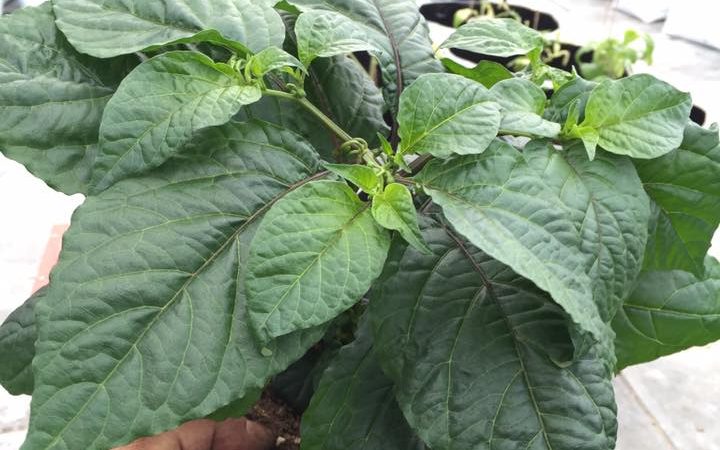Cultivation of chili - temperature - light - humidity ?
Posted by REMY EKORNSETER

When you are about to start growing chillies and you want to achieve better results than at the kitchen counter or living room window, you may want to read this text. There are huge differences between doing it right or wrong, and here you will find out why and how.
When chilies have sprouted from the soil, they need light immediately. Without any kind of light they will die quite quickly. Light is very variable, some use what they have or what little daylight is available from outside. Considering that it is most normal to sow chillies from December to January, there is not much light to be had. Optimally, you have 420w of light per m2, approx. 18c, 65-75% humidity, air circulation and light rhythm of 18/6. But the vast majority do not have optimal lighting. And good ventilation is required to drive away the heat the lights develop.
When you first start, you can get by with less light and place the sprouts as close as possible, without it getting too hot or scorched. One should also have a fan that circulates the air which is switched off at night (when the lights are off). Already now you need to start moistening the plants. It is best to do it in the morning before the light goes on with a shower from a spray bottle. As the plants grow and you repot, the light must be moved and the area becomes larger. Now you can advantageously increase the lighting. The problem most people then have is the build-up of heat. This must be ventilated in one way or another, possibly colder air must be brought in so that the temperature preferably stays below 20c. The main reason why the temperature must be kept down is simple. Under normal conditions, we are unable to give the plants as much light as they would get from daylight. What happens is that the plants stretch. Chillies quickly become very long and thin, this results in weak plants that bear little fruit and will take a long time to recover during the season, sometimes never. And the poorer the lighting and the hotter it is, the bigger the problem.

Therefore, temperature is important! Growth in the first few months should be dense, low, and the trunk should develop to become thick and strong. A chinense that is 10cm high may have 6-7 pairs of leaves which form a nice low crown. Another thing is that the root system will develop faster when the plant above ground does not stick out and becomes long and thin. The better the root system, the better plant you will have throughout the season, so it is important to keep an eye on the roots and replant when needed so they can develop! When the plants have been repotted, the plants should be showered twice a day, the most important thing is when the light is off so that they can stand in a moist environment when they emit co2. Feel free to use epsom salt at least once a week in the water. As the process continues, moisture becomes more and more important. If you want fruit, for example, it is very important to have high humidity in order for the pollen to be potent and form correctly. Many people find that chillies lose all their flowers and in most cases this is due to low humidity, as long as they have good nutrition and light. When the plates get bigger, you can start increasing the temperature. If you grow mainly indoors, you can have 25c when they set flower and fruit, as long as you have plenty of light (min 250w per m2 
Small dense plants in 2-4 liter pots that are 2-3 months old will shoot up when they get out into the greenhouse. And just to clarify. There are many strange myths about the different chili families. No plant is more difficult than another. But there is a big difference in germinating the seeds. The seeds of a hybrid of chinense tend to take a long time to germinate, while annuum can germinate overnight. The same applies to baccatum, but with some exceptions. Many say that you have to do chinense so early because they take so long. The reality is that annuum is the one that germinates the fastest, grows quickly at first, but eventually it is overtaken by chinense and baccatum. Chinense is slow in the first few months, but it shoots up and becomes a big bush before you know it! And most often you have much more fruit on them than annuums in the summer, which also ripen earlier. Baccatum are often the earliest to ripen and produce well. So you can safely start sowing chinense a week before the others.


